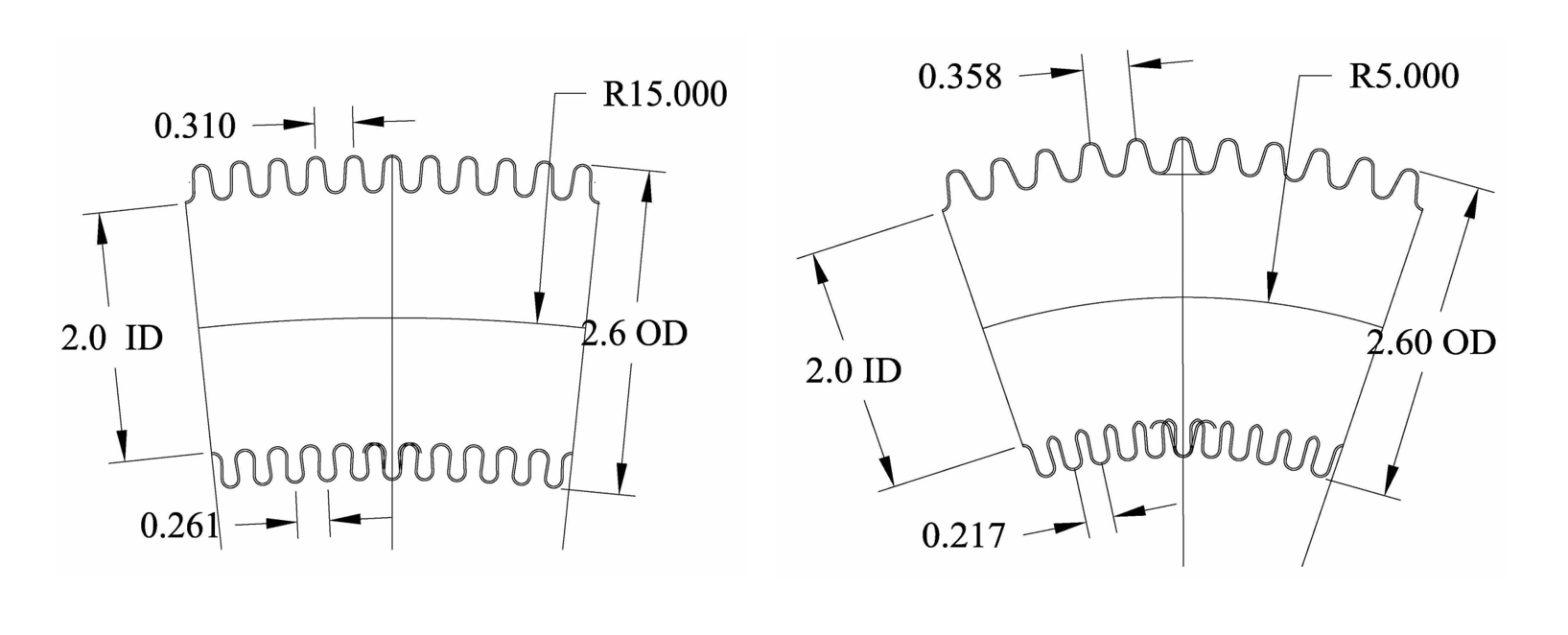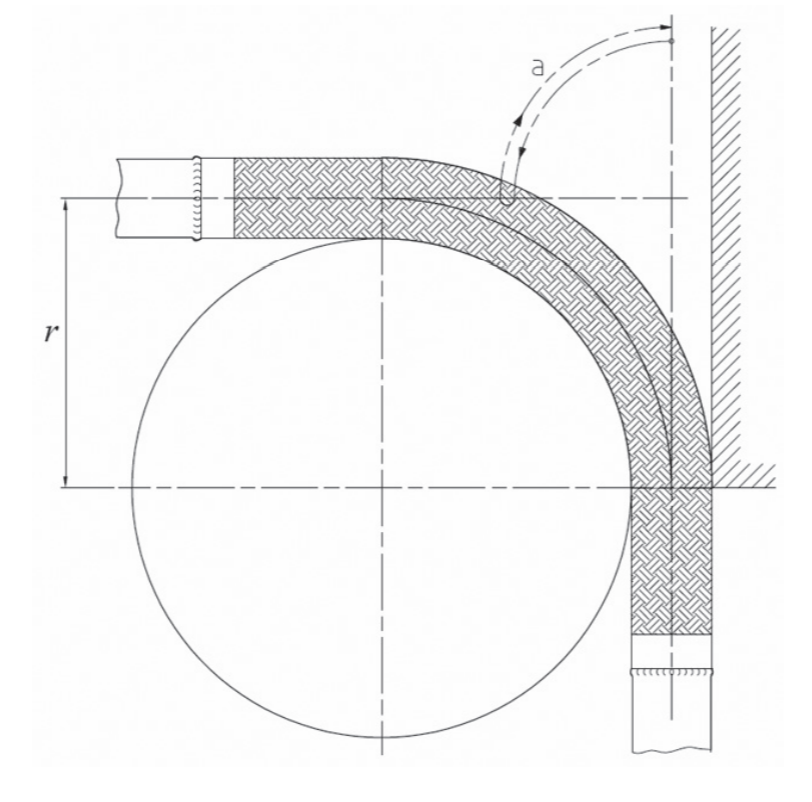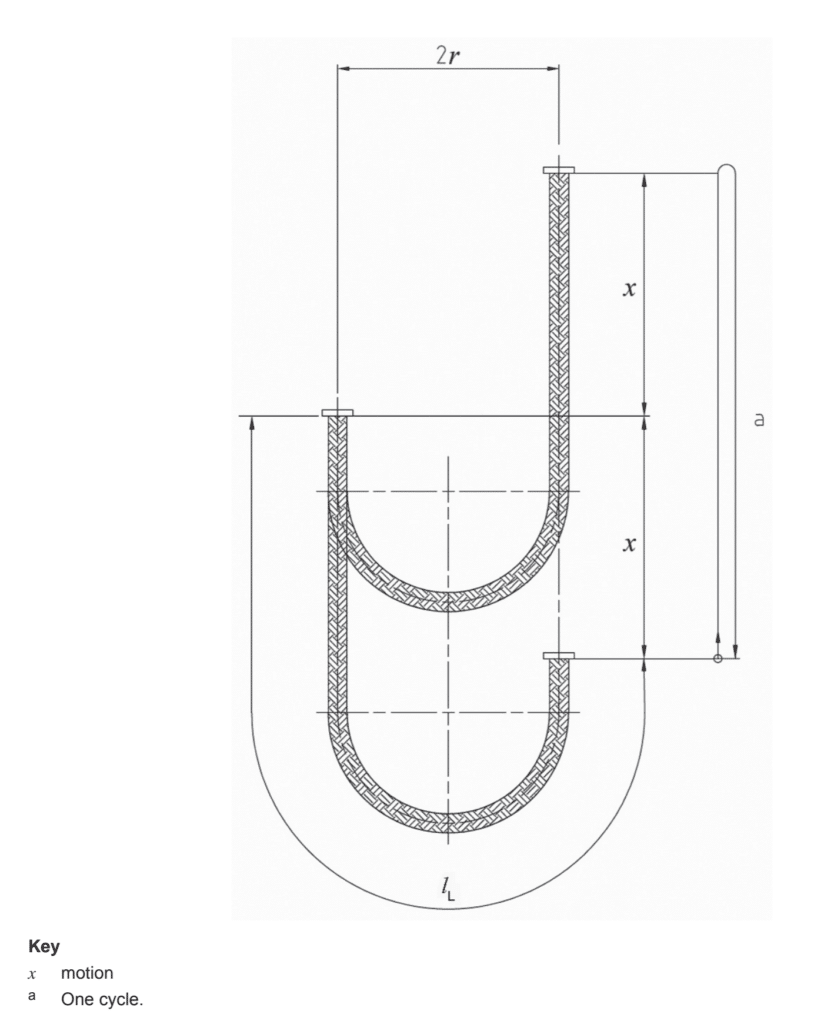What’s the Difference Between Static and Dynamic Bend Radius?
Note: To print this bulletin on what’s the difference between static and dynamic bend radius, please click here.
Static and dynamic bend radius are flex hose measurements that relate to two types of applications. Generally speaking, a hose can either be installed in a static application or a dynamic application.
Manufacturer catalogs publish minimum values for both bend radii. Good cycle life is no longer a realistic expectation in the different applications beyond these values.
Static Applications
Consider a hose that’s installed to correct misalignment between a piece of equipment and the piping system outlet. No cycling is expected. The hose will not move once installed. If it is bent during installation, that bend will remain in place for the duration of the hose’s service life.
Without movement, this is a static application.
Dynamic Applications
On the other hand, consider a hose that’s installed in a traveling loop to absorb axial movement in the piping system. Cycling is expected with each expansion or contraction of the surrounding pipe. The hose will experience repeated movements throughout the duration of its service life.
Given there is movement, this is a dynamic application.
If a hose is installed to absorb any movements, the application is a dynamic one. We referenced traveling loops above. Hoses installed to absorb angular or offset movements would also be expected to move dynamically. With a longer list of use cases, dynamic applications are more common than static applications.
Stress That Leads to Fatigue and Failure
Whenever a hose moves, whether in a static or dynamic application, corrugations in the sections experiencing movement–in other words, the sections that are bending–will experience relative movements.
Corrugations on the inside of the bend will compress while corrugations on the outside will extend. The tighter the bend, the greater the deflection.
Comparison of deflection in corrugations
between dynamic and static minimum bend radii for a 2” hose

Imagine a paper clip. Take that straight piece and bend it back and forth repeatedly. What happens? At a certain point, you won’t be able to put the piece back the way it was. Keep going, and eventually the piece breaks off.
This is a great example of how movement stresses material, and at some point how those stresses can exceed material strength. The same is true with metal hoses. With each bend of the hose and concurrent deflection of its corrugations, there is stress.
Why are Static Bend Radius Values Less Than Dynamic Bend Radius Values?
So while the static and dynamic bend radius values tell a user how far a hose may be bent in a certain kind of application before it will deform and no longer perform as expected, with an understanding of bending stress, we can understand why a hose can be bent tighter in a static application than it can in a dynamic application.
One of the stress catalysts has been removed: movement.
Additionally, without movement, there is no expectation that the hose will need to resume its original shape. For this reason, if the hose takes a permanent set in a static application, it’s likely not a problem.
A Bigger Bend Radius is Better
With an understanding of bending stress, it also becomes quite clear that a larger bend radius will reduce stress on individual corrugations when repeated cycling is expected.
Do not take the minimum bend radius values published in your manufacturer’s catalog for your ideal design parameters. Operating at minimums will not yield maximum results. Where the configuration and space allow, we encourage users to opt for a longer hose in order to receive a bigger bend radius.
How are Static and Dynamic Bend Radius Values Determined?
There are known tests for determining minimum bend radius values. For instance, Penflex hoses are tested to international standard ISO 10380.
To determine static bend radius, an unpressurized hose is bent 10 times around a mandrel of specified dimension based on hose size. The hose is then pressurized and subjected to a leak test. If it passes the leak test, then a value for minimum bend radius can be given based on the mandrel’s dimensions.

To determine dynamic bend radius, a pressurized hose is hung in a constant radius traveling loop with a bend radius specified by the standard and subjected to 10,000 cycles. A hose fails if it begins to leak or if the radius is reduced by more than 50% during the test. If neither scenario plays out, the hose passes the test and a value for minimum dynamic bend radius can be given based on the bend radius used for the test.

The standard writes that “the test shall be conducted with the hose at the relevant maximum allowable working pressure” meaning the pressure used to conduct the testing is at the discretion of the manufacturer. Pressures may be reduced to meet the specified bend radius values. This is to say that comparing bend radius values from different manufacturer catalogs is not always an apples to apples comparison.